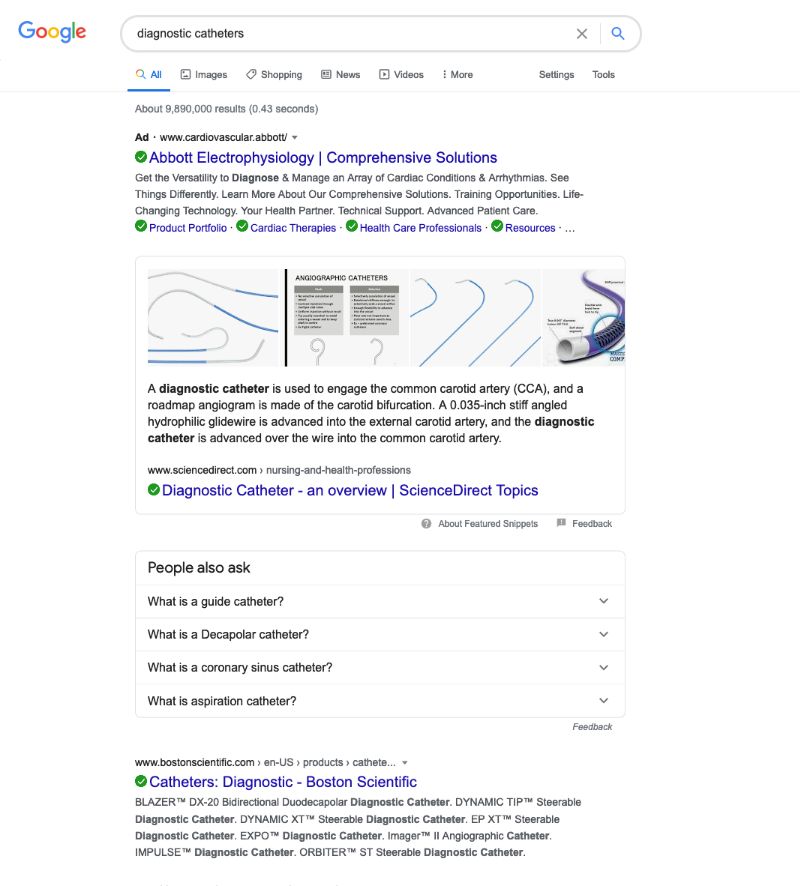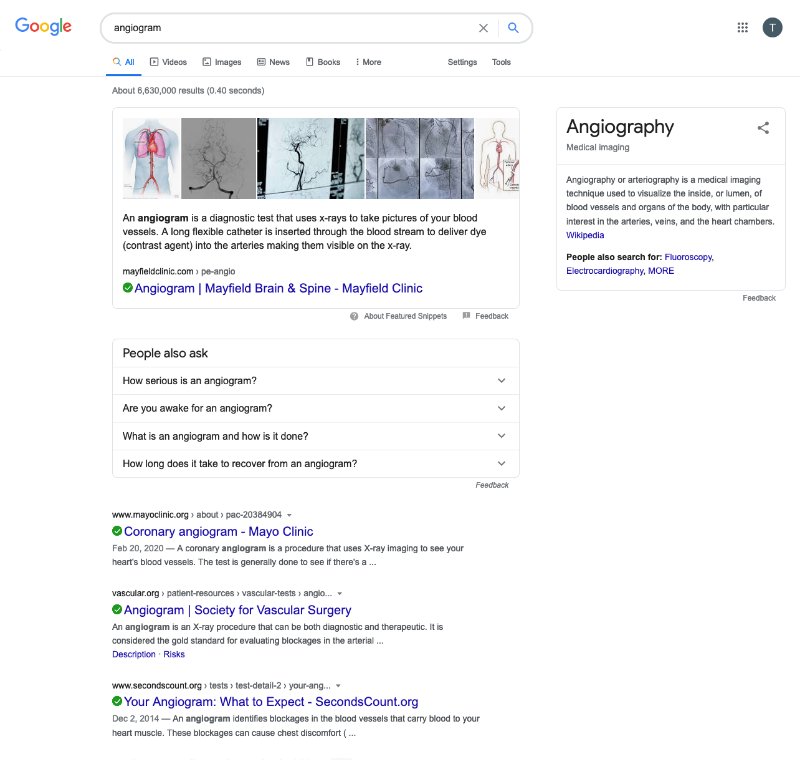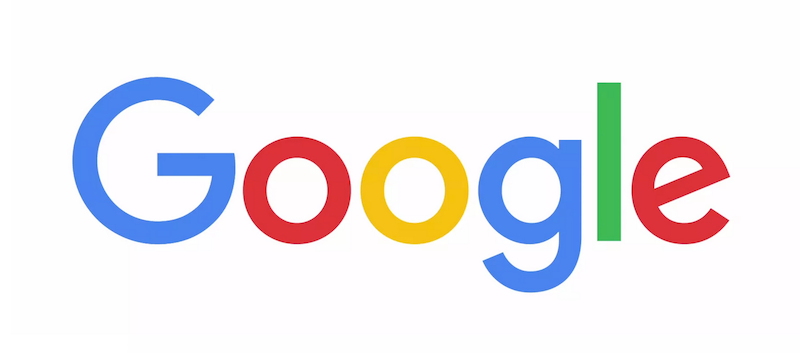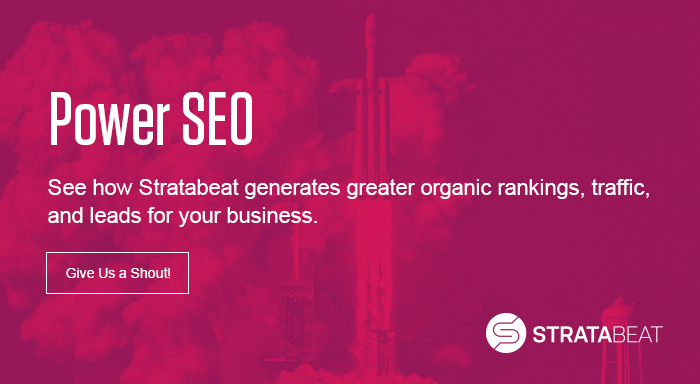Understanding Search Intent for Superior SEO

Do you generate ridiculously awesome content?
Want that content to rank high in Google?
Then, make absolutely sure you’re aligning with search intent.
What is Search Intent
Search intent is the reason underlying a person’s search in a search engine such as Google. More than just the words they type or what they are trying to find, it’s about WHY. It’s about the context.
For example, if I’m a doctor and I’m searching for “diagnostic catheters”, what appears on Google page one is listings of diagnostic catheter products and the associated product specifications and other product details. The purchase needs to be made through contacting the company behind each website respectively, not via ecommerce.
Clearly, the intent of this search is to help medical professionals learn about the different product options available, along with the details surrounding each product, to facilitate a purchase by hospitals and other medical facilities.
Compare this with a search for “angiogram”, where the search results provide answers to individuals/patients or their caregivers. The listings are filled with dictionary definitions, explanations why angiograms are necessary, the risks involved and instructions how to prepare for the procedure. Nothing here for doctors or hospital administrators. Nothing to purchase. The only information provided is to educate individuals.
Generating content without an understanding of search intent for your target keywords is akin to trying to talk to someone without knowing the language they speak. In other words, it’s a completely random exercise with a high probability of missing the mark.
Why Search Intent Matters for SEO
Search intent matters. A lot.
Google strives to provide the most relevant answers to search queries, as that delivers the greatest experience to searchers. As part of that, aligning with search intent is a cornerstone of Google’s algorithm.
This is evidenced in Google’s Quality Rater Guidelines. Section 12.7 of the Guidelines is “Understanding User Intent,” with five associated sub-sections across five pages of content.
Given Google’s focus on aligning with search intent, it behooves you to make search intent determination a key part of your B2B SEO and content planning process.
Generate Higher SEO ROI
Learn to drive greater organic rankings, traffic and leads. Book a Strategy Call.
Types of Search Intent
When looking at search intent, there are four main types of searches to consider:
Informational
Many people are simply looking for information on a topic. They may want to understand what something is (what is data science, for example) or how something works (like the Google organic ranking algorithm). Or they want to learn how to do something like fix a broken sink incinerator (garbage disposal), etc.
Informational searches often include the following types of words:
- How
- How to
- What
- Why
- Ideas
- Tips
- Examples
Navigational
On the other hand, sometimes people know exactly where they want to go and are simply typing in the destination into the Google search bar. For example, “LinkedIn” or “IBM” or “Ginkgo Bioworks”.
If someone is looking for a specific destination, they are not looking to visit your blog post about that destination or to be duped into visiting a competitor’s site. They want the destination they are typing. Period. End of story.
Transactional
With a transactional type of search, the person is looking to make a purchase. They know what they want, and they want to purchase it.
They may conduct the following types of searches:
- “buy 1password”
- “1password discount code”
- “1password deals”
- “get 1password”
- “1password for business”
- “1password for mac”
Commercial Investigation
With commercial investigation search intent, someone is looking to potentially make a purchase, but has yet to make a final purchase decision and is still very much in the purchase funnel. These types are searches often involve looking for options, product comparisons, online reviews, case studies, and other types of support information to aid in the purchase decision.
Examples of these types of searches include:
- “best password managers”
- “top rated password managers”
- “what to look for in a password manager”
- “enterprise level password manager”
- “1password vs lastpass”
- “1password reviews”
How to Optimize for Search Intent
To rank high in Google, make sure that your content is fully aligned with search intent for the target keywords.
- If someone is looking for educational information, don’t try to sell a product.
- If someone is looking for LinkedIn, don’t try to intercept the traffic.
- Someone seeking a comparison? Don’t feature a single product.
- Someone seeking information to help them make a purchase decision? Don’t publish a “What is _____” definitional post.
Keywords
Once you’ve decided to develop a content plan for a specific topic, you can use an SEO research tool such as Ahrefs Keywords Explorer, Moz Keyword Explorer or KeywordTool.io to uncover related keywords for the different types of search intent through the funnel.
For example, filter your keyword research with the words “how to”, “why”, “ideas”, etc. to uncover informational searches. Filter with the words “best”, “review”, “comparison”, etc. to discover commercial investigation-related keywords.
Content Format
When you know the keywords you want your content to rank on, you should investigate and confirm the types of content that Google is displaying on page one of the SERPs. Is Google displaying videos? Blog posts? Tools? Tweets? News? Category pages? Product pages?
And beyond content from other websites, there’s a variety of content organized by Google itself that you should consider as well. These can include:
- Shopping carousel
- Knowledge panel
- People also ask
- People also search for
- Popular on the web
- Featured snippet
- Etc.
Transform Your SEO Results
Hire Stratabeat to drive greater organic rankings, traffic and leads for your business. Book a Strategy Call.
Summary: Search Intent
The bottom line is that when you are optimizing your pages and content for specific keywords, make sure you’re aligning with the individual’s search intent. As explained, you can confirm the intent by reviewing Google page one for your keyword, evaluating the type of content on the page as well as the content format, and making sure that what you optimize is in line with what Google is displaying for that keyword.
If Google doesn’t think that your content is aligned with intent, it isn’t going to rank it high in the SERPs.
Remember, the most important thing for a searcher is to find exactly what they were looking for. It’s also important that the journey is a great experience. So, study Google page one for your keywords, customize accordingly and deliver the best experience for the searcher.




